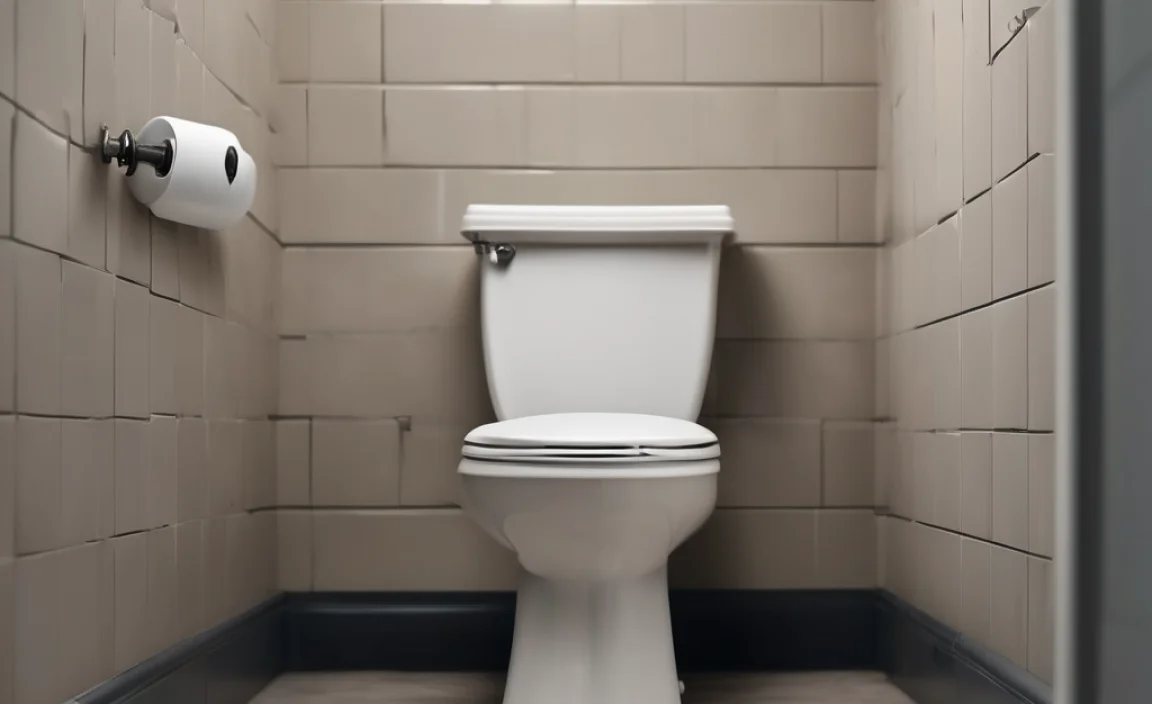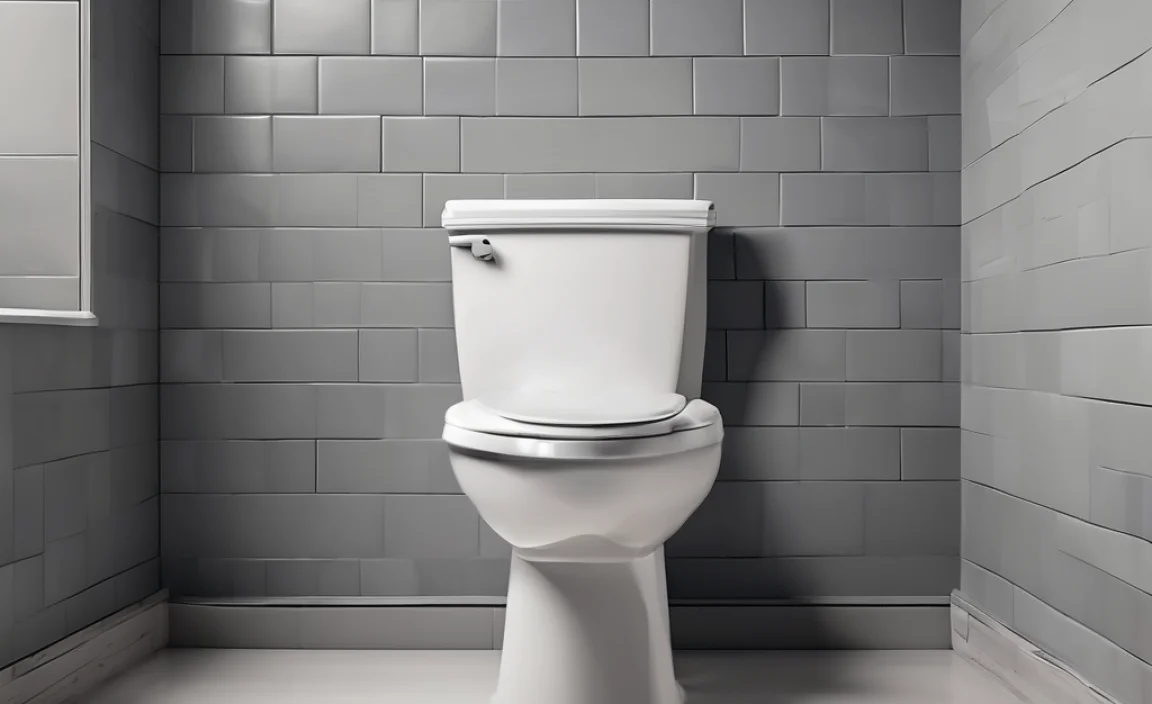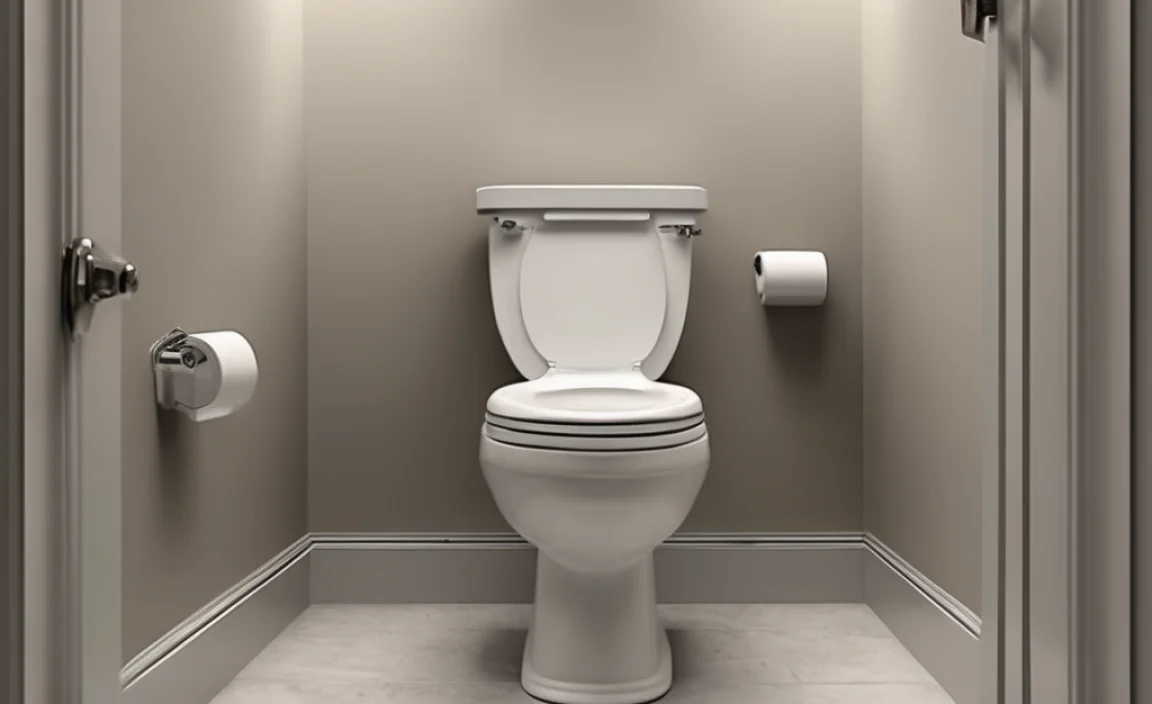Quick Summary: No U.S. President has actually died *on* the toilet. However, Elvis Presley, the “King of Rock and Roll”, tragically passed away on the toilet in 1977. While some historical figures have died shortly after using the toilet due to illness, no U.S. president has met their end in that specific location.
The image of someone dying on the toilet is a surprisingly common one in our cultural imagination. Maybe it’s the inherent vulnerability of the situation, or perhaps it’s just an odd quirk of fate. Whatever the reason, it’s a question that pops up more often than you might think, especially when discussing the deaths of famous figures. So, let’s clear up the confusion and explore who *didn’t* die on the toilet, and some interesting facts about presidential deaths.
We’ll debunk the myth, look at how presidents actually died, and explore the circumstances surrounding their passing. Get ready for a quick dive into history. Let’s get started!
Debunking the Myth: No President Died on the Toilet

The good news is, the answer is pretty straightforward: No United States President has died on the toilet. The idea might have come from the fact that some presidents suffered from illnesses that affected their digestive systems, or simply because we often associate the toilet with vulnerability and unexpected events.
Let’s take a look at how some presidents actually passed away. It’s a mix of illnesses, assassinations, and natural causes.
How Presidents Actually Died

While no president died *on* the toilet, many have died from illnesses or other causes. Understanding the real circumstances surrounding their deaths provides a clearer picture of history.
Assassination
Four presidents have been assassinated while in office, marking tragic moments in American history:
- Abraham Lincoln: Shot by John Wilkes Booth in 1865. He died the next morning.
- James A. Garfield: Shot by a disgruntled office seeker in 1881. He died of infection months later.
- William McKinley: Shot by an anarchist in 1901. He died of gangrene resulting from the wound.
- John F. Kennedy: Shot by Lee Harvey Oswald in 1963. He died almost immediately.
Illness
Many presidents have died from various illnesses, reflecting the medical challenges of their times:
- William Henry Harrison: Died of complications from typhoid, pneumonia, or paratyphoid fever in 1841. His death was only 31 days into his presidency.
- Zachary Taylor: Died of cholera morbus (likely gastroenteritis) in 1850.
- Warren G. Harding: Died of a heart attack in 1923.
- Franklin D. Roosevelt: Died of a cerebral hemorrhage in 1945.
Natural Causes
Some presidents lived long lives and died of natural causes, often after leaving office:
- John Adams: Died of old age in 1826, on the 50th anniversary of the Declaration of Independence.
- Thomas Jefferson: Also died on July 4, 1826, just hours before John Adams.
Famous Figures Who Did Die on the Toilet

While no U.S. president has died on the toilet, one extremely famous person did meet their end in that location: Elvis Presley.
Elvis Presley
Elvis Presley, the “King of Rock and Roll,” died on August 16, 1977, at his Graceland mansion. He was found unresponsive in his bathroom, and while the exact circumstances remain somewhat debated, it’s widely accepted that he passed away on the toilet.
The official cause of death was cardiac arrhythmia, but contributing factors included his long-term abuse of prescription drugs. Presley had struggled with addiction for years, and the combination of medications likely played a significant role in his sudden death. His passing shocked the world and cemented his legendary status.
The Vulnerability of the Toilet: Why the Myth Persists

So why does this myth about presidents dying on the toilet keep circulating? It likely has to do with the perceived vulnerability of the situation. Think about it: you’re in a private, exposed moment. It’s not a place where you expect to face a life-threatening event.
Here are a few reasons why this idea might stick in our minds:
- Unexpectedness: Death on the toilet is unexpected and somewhat shocking. It’s a stark contrast to the dignity and formality we often associate with historical figures.
- Vulnerability: The bathroom is a private space where we’re at our most vulnerable. The idea of a powerful leader dying in such a setting can be unsettling.
- Humor: There’s a dark humor to the idea, which can make it memorable and easily shared.
The Health of Presidents: Hidden Struggles

Presidents, despite their powerful positions, are still human and subject to health issues. Some have faced significant medical challenges while in office, often hidden from the public eye.
Woodrow Wilson’s Stroke
In 1919, President Woodrow Wilson suffered a severe stroke that left him partially paralyzed. The severity of his condition was largely concealed from the public, and his wife, Edith Wilson, played a significant role in managing his affairs during the remainder of his presidency. This situation raised questions about who was really running the country and the extent to which the public should be informed about a president’s health.
Franklin D. Roosevelt’s Polio
Franklin D. Roosevelt was diagnosed with polio in 1921, which left him paralyzed from the waist down. He went to great lengths to conceal his disability from the public, fearing it would undermine his image of strength and leadership. He used braces and leaned on others for support, and the press generally cooperated by avoiding photographs that highlighted his condition. Despite his physical challenges, Roosevelt served as president for over 12 years, leading the country through the Great Depression and World War II.
John F. Kennedy’s Health Issues
John F. Kennedy also faced numerous health issues throughout his life, including chronic back pain and Addison’s disease. These conditions were largely kept secret from the public, as they could have raised concerns about his ability to serve as president. He relied on various medications and treatments to manage his pain and other symptoms, but his health remained a closely guarded secret until after his death.
Presidential Deaths: A Statistical Overview
To put things in perspective, let’s look at some statistics related to presidential deaths. This will help us understand the broader context and frequency of these events.
| Cause of Death | Number of Presidents | Presidents |
|---|---|---|
| Assassination | 4 | Abraham Lincoln, James A. Garfield, William McKinley, John F. Kennedy |
| Illness (While in Office) | 4 | William Henry Harrison, Zachary Taylor, Warren G. Harding, Franklin D. Roosevelt |
| Natural Causes (After Leaving Office) | Many | John Adams, Thomas Jefferson, and many others |
The Impact of Presidential Deaths
The death of a president, whether in office or after, has a profound impact on the nation. It can trigger periods of mourning, uncertainty, and political upheaval. Here are a few ways presidential deaths have shaped American history:
- Succession: The Constitution outlines the process of presidential succession, ensuring a smooth transition of power. However, the circumstances surrounding a president’s death can still create challenges and test the system.
- Policy Changes: The death of a president can lead to shifts in policy and priorities. For example, the assassination of Abraham Lincoln resulted in different approaches to Reconstruction.
- National Unity: In times of crisis, the nation often comes together to honor the memory of a fallen leader. This can foster a sense of unity and shared purpose.
Presidential Health: Transparency and the Public
The health of a president is a matter of public concern, but there’s often a tension between the need for transparency and the desire to maintain privacy. How much information should be disclosed to the public, and what are the potential consequences of withholding information?
Arguments for Transparency
- Accountability: The public has a right to know if a president is physically or mentally impaired, as this could affect their ability to lead the country.
- Informed Decisions: Voters need accurate information about a candidate’s health to make informed decisions during elections.
- Trust: Transparency builds trust between the president and the public.
Arguments for Privacy
- Personal Rights: Presidents, like all individuals, have a right to privacy regarding their personal health information.
- National Security: Disclosing certain health information could be exploited by adversaries.
- Political Considerations: Releasing sensitive health information could be used for political gain or to undermine a president’s authority.
Other Notable Deaths and Strange Circumstances
While we’ve focused on presidents and the “toilet death” myth, there are other notable deaths and strange circumstances in history worth mentioning.
Tycho Brahe
Tycho Brahe, a 16th-century Danish astronomer, is rumored to have died from a burst bladder after refusing to leave a banquet to relieve himself. While the exact cause of death is debated, the story highlights the sometimes bizarre and unexpected ways people have met their end.
Harry Houdini
Harry Houdini, the famous magician and escape artist, died on Halloween in 1926 after suffering a ruptured appendix. The rupture was allegedly caused by a student who punched him in the stomach to test his famed abdominal strength. The circumstances surrounding his death are shrouded in mystery and speculation, adding to his legendary status.
Conclusion
So, while the image of a president dying on the toilet might be a funny thought, it’s simply not true. No U.S. president has met their end in that particular way. However, the question opens the door to understanding how presidents *did* die, the health challenges they faced, and the impact of their deaths on the nation. Learning about these historical events helps us appreciate the complexities of leadership and the human side of even the most powerful figures.
And remember, while history can be serious, it’s okay to be curious about the quirky questions too! Hopefully, you now have a clearer picture of presidential deaths and can confidently debunk the toilet myth whenever it comes up. Keep exploring, keep questioning, and keep learning!
FAQ
Did any Founding Fathers die in strange ways?
While not exactly “strange,” both John Adams and Thomas Jefferson died on the same day: July 4, 1826, the 50th anniversary of the Declaration of Independence. That’s a pretty remarkable coincidence!
Why do we care about how presidents die?
The death of a president is a significant event that affects the entire nation. It impacts the line of succession, can influence policy, and often leads to a period of national mourning and reflection.
Is it true that some presidents kept their illnesses secret?
Yes, many presidents have concealed their health issues from the public, either for personal privacy or to maintain an image of strength and stability. Examples include Franklin D. Roosevelt’s polio and John F. Kennedy’s various health problems.
What happens when a president dies in office?
The Vice President immediately becomes President. This is outlined in the Constitution and ensures a smooth transition of power. After the Vice President, the Speaker of the House is next in line.
Has any president died a peaceful death?
Yes, many presidents have died peacefully of old age after leaving office. John Adams and Thomas Jefferson, who both died on the same day, are examples of presidents who lived long lives and died of natural causes.
What’s the most common cause of death for presidents?
While in office, illness has been a common cause. After leaving office, natural causes are the most frequent reason, as presidents often live well into old age.
How has medical care for presidents changed over time?
Dramatically! Early presidents had limited access to medical care, while modern presidents have access to the best doctors and technology available. This has significantly impacted their health and longevity.

